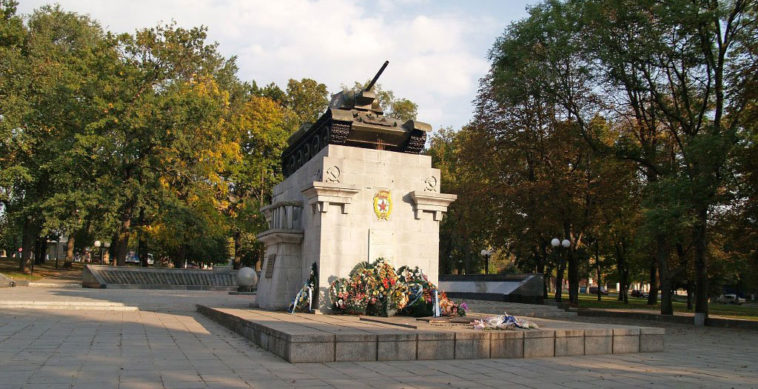Today is May 9th. For anyone outside of the former Soviet states, it’s basically an inconsequential day – yes it marks victory of Nazi Germany but really, most Western states celebrate on November 11 (or if you’re in the States, on Veteran’s Day). But that’s not the only difference of this one particular day. The important difference is in the way we here celebrate the end of the First and Second World War and how Ukraine and Russia have done so in the past.
Here, we celebrate by commemorating the dead: the red poppies we wear represent those men and women who gave their lives in order for our country to be existent. It is not so much a celebration of triumph as is a remembrance of those who died during wars which at times seemed unjustifiable. We do not celebrate the defeat of one nation over another but rather we remember the actions and deeds of our own – those who represented the very bravest and best of our country.
I hope, in the future, that this day will be remembered in the same way in Ukraine. For decades May 9th represented the triumph of the Soviet Union – inconsequential of its actions, deeds, own massacres and killings. Today, it seems to be transforming into something else, not of glorifying the greatness of the Soviet system but rather the remembrance of everyone who gave their lives for the Ukrainian nation.
For many years, this day was represented by the hundreds of old Soviet T-34 tanks that are littered throughout Ukrainian parks. I remember one was in a central park in Kamianets-Podilskyi, taking center stage among the green trees and playing children. You couldn’t miss it – it was surrounded by a piazza of some sort (with a terrible pizza joint as the main feature). Old, dilapidated and turning into a weird greenish-brown colour it was still there – big, fat red star attached to it to add some of that old Soviet oomph.
Kamianets-Podilskyi is known for the castle – it lies on an island of earth (sort of a canyon really) which was ideally situated for the Cossack rebellion. And that is the beauty of this city – even of Ukraine itself. You cannot go from one city or town to another without finding some history imbedded deep within. For Kamianets-Podilskyi it is both its castle (complete with Cossack statues standing guard) and its Holocaust memory. These are the two major events of the city and that big fat old tank in the park doesn’t represent either of it. Nor does it represent the other history of the city: the brief headquarters of the Ukrainian National Republic after the First World War and the massacre of the Roma community during the Second World War.
Walking along the old streets of this once flourishing metropolis (for it was populated with a variety of ethnicities including Albanians, Jews, Hungarians and so on), I found an old marker on a building with Symon Petliura’s face on it. ‘In this building, the Ukrainian National Republic held Parliament’ – or something along those lines. This is where Petliura fled to with the rest of the government after the Bolshevik’s seized Kyiv. All this episode gets is a plague on a wall of some obscure building.
The other, more tragic event in the city’s history is the massacre and deportation of almost the entire Roma community by the Germans during the Second World War. At least, I think it is. This is what our tour guide told me but I can’t seem to find any information about it. There’s also – from what was described to me by said tour guide – a monument for this episode on one of the longest bridges I’ve driven on. I have a picture to prove it but again, can’t find any information about it. But that aspect isn’t important – what is important is that they too are forgotten on May 9th. Their pain and their sorrow are not recalled. That old tank just sits there but only represents a small aspect of the city’s history.
May 9th should be celebrated and commemorated – but not just for the victory over the Third Reich but also a remembrance of all those who were killed, sometimes just for being. Kamianets-Podilskyi represents just one city in Ukraine where history is overpowered by ideology and politics. The Soviets used this day to celebrate themselves (and Stalin in particular, even though he himself didn’t like this day nor did he win the war for the Soviets) when instead it should have been a day to bring people together in their common loss. Hopefully, this is what this day will be in the future Ukrainian state: a day where sides are no longer important but remembrance of their communal tragic history is.




GIPHY App Key not set. Please check settings